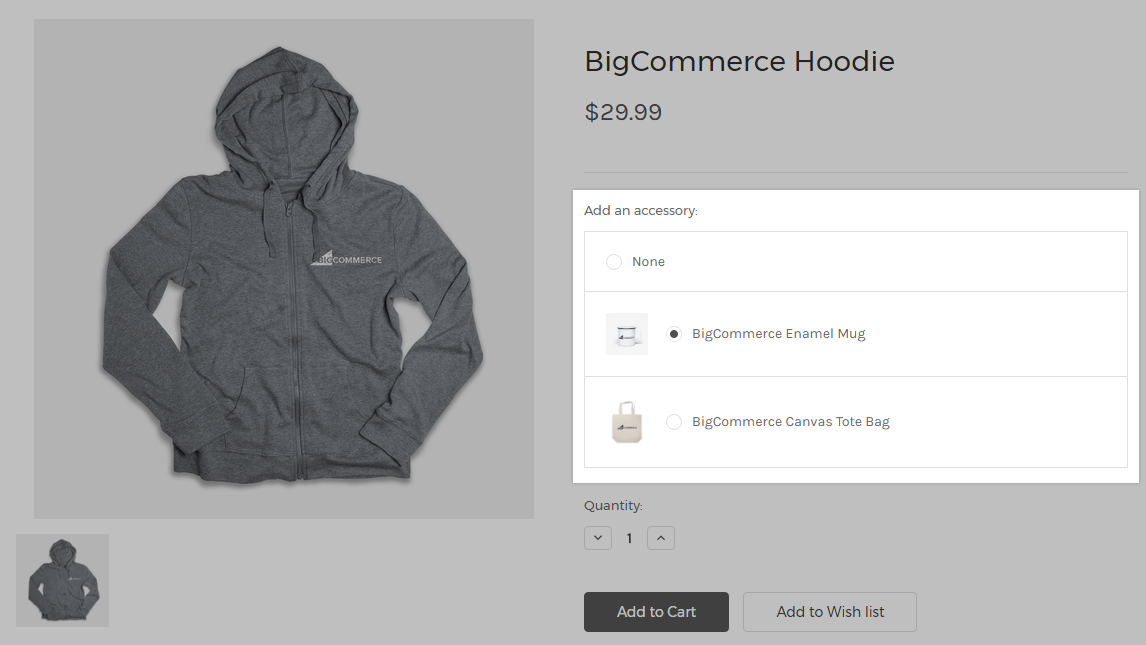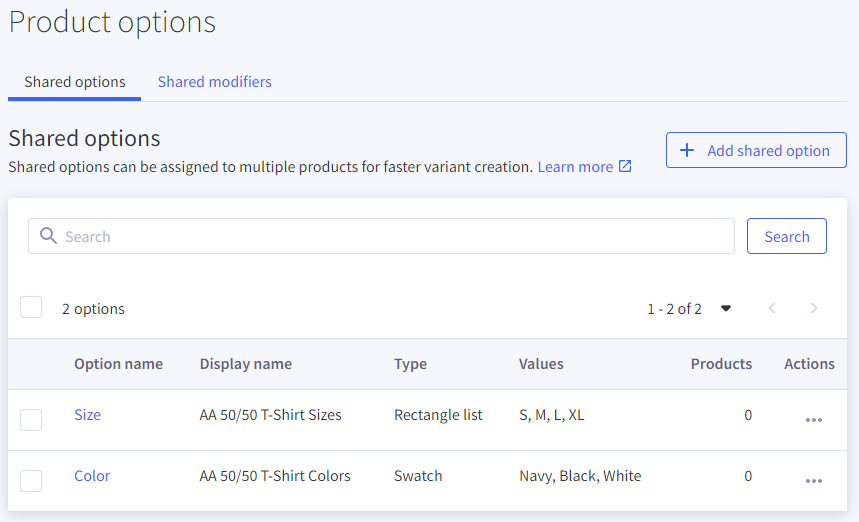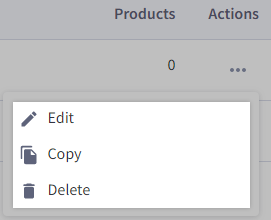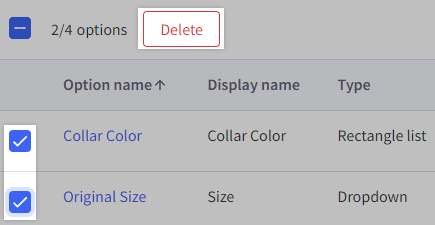
Products often come in different variations, such as size or color, or can be customized with features like personalization or additional accessories. With BigCommerce, you can use variants and modifiers to offer these and other product options in your store.
This chapter will walk you through the different attributes of variants and modifiers, how they appear on products in the storefront, and how to save time by using shared variant and modifier options.
Variants vs. Modifiers
Variants are used in situations where the combination of options would result in a unique product, such as a shirt that comes in different colors and sizes. Modifiers allow customers to personalize or add onto the original product, such as a mug with engraving or a gift basket with a selection of food items.
The table below provides a comparison of the capabilities in variants and modifiers.
| Variants | Modifiers |
|---|---|
| SKUs are automatically assigned to each variant. | SKUs cannot be assigned to modifiers. |
| Inventory can be tracked at the variant level, or at the base product level. | Inventory cannot be tracked for individual product modifiers. |
| You can create a maximum of 600 variants per product. | There is no limit to the number of modifiers that can be added to a product. |
| Variants have explicit prices, meaning that the default and sale price is independent of the base product’s pricing. | Modifiers use rules to change the relative price of the base product, adding to or subtracting from the default price. |
| Variants can have unique weight, dimensions, images, and product identifiers. | Modifiers use the base product’s dimensions, images, and product identifies, and use rules to add or subtract weight from the base product. |
| Variant options can be created and updated via CSV import. | Price and weight rules can be imported for existing modifier options, but new modifier options cannot be created via CSV import. |
Variant Options
When adding or editing a product in the control panel, its variants can be found under Variations. From here, you can add new variant options or adjust existing ones. See Product Options (v3) for the steps to creating variant options.

Note: Unchecking columns in the Edit columns dropdown hides these fields in the table, but it does not disable any entered values. For example, a variant’s sale price will still be visible on the storefront after unchecking the Sale Price field in the dropdown.
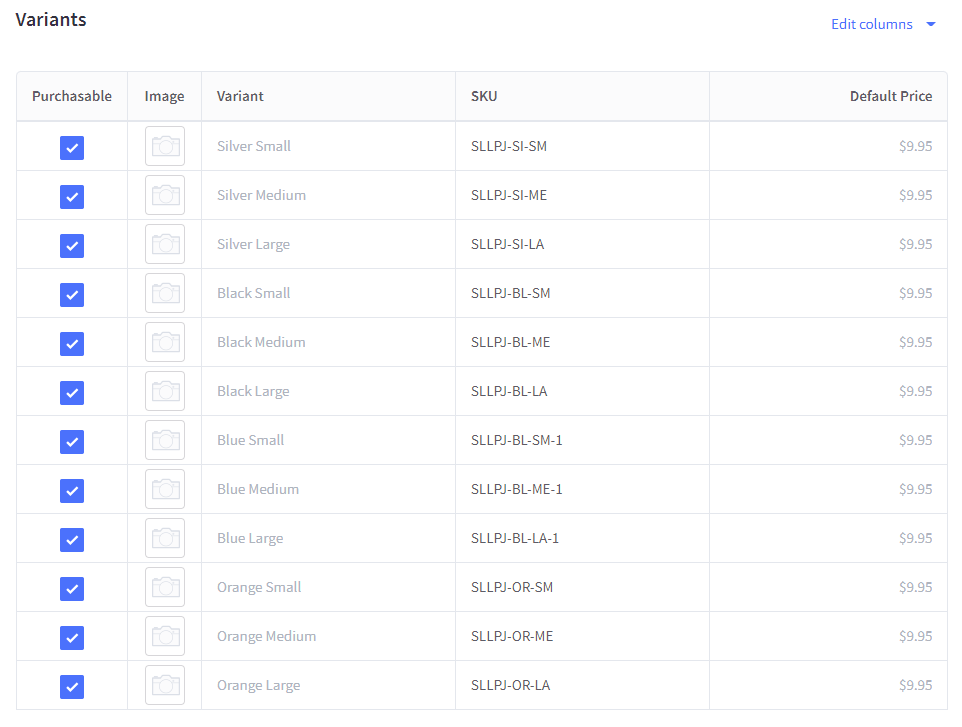
When creating variant options, you can assign a pre-selected default value for the product, or leave the option values unspecified. Assigning default values can be convenient for your customers if your product has a standard or recommended variant.
Variant options can be configured in one of four multiple choice option types:
Swatch
With swatches, you can display different color options for your product by entering a hex code, using the color picker, or uploading an image. Swatch options are useful for products that come in different colors, patterns, or materials.
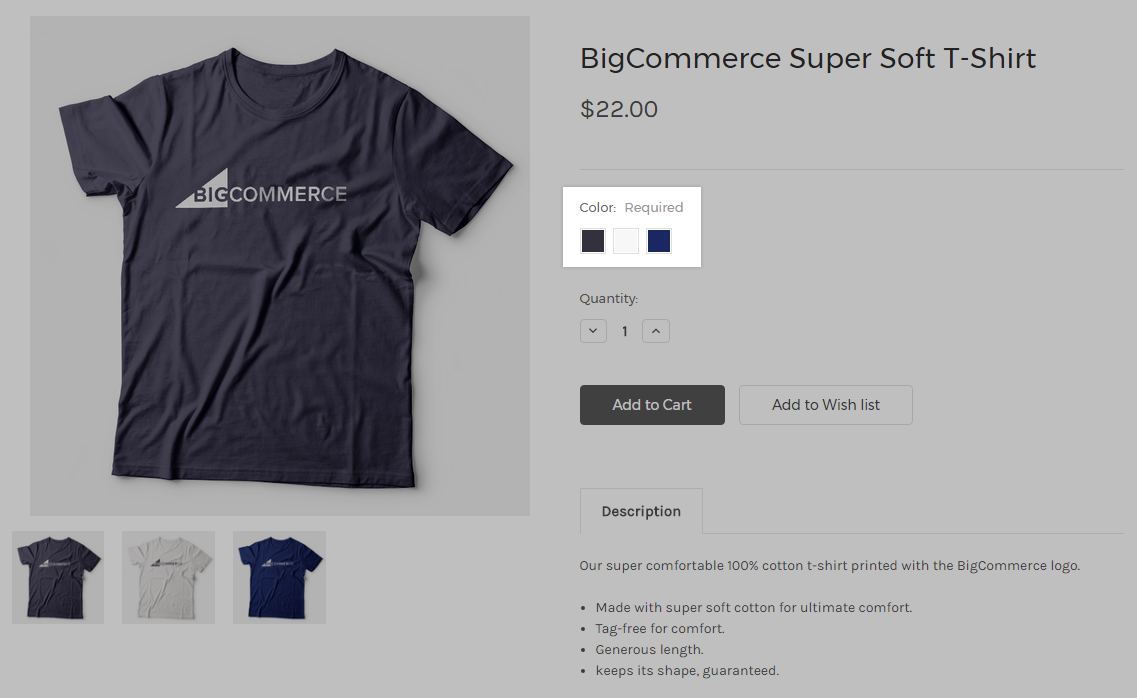
Radio Button
Radio buttons present their option values in a single column on the product page. These are better for emphasizing a short list of options that won't take up much space, such as Yes or No questions or limited size options.
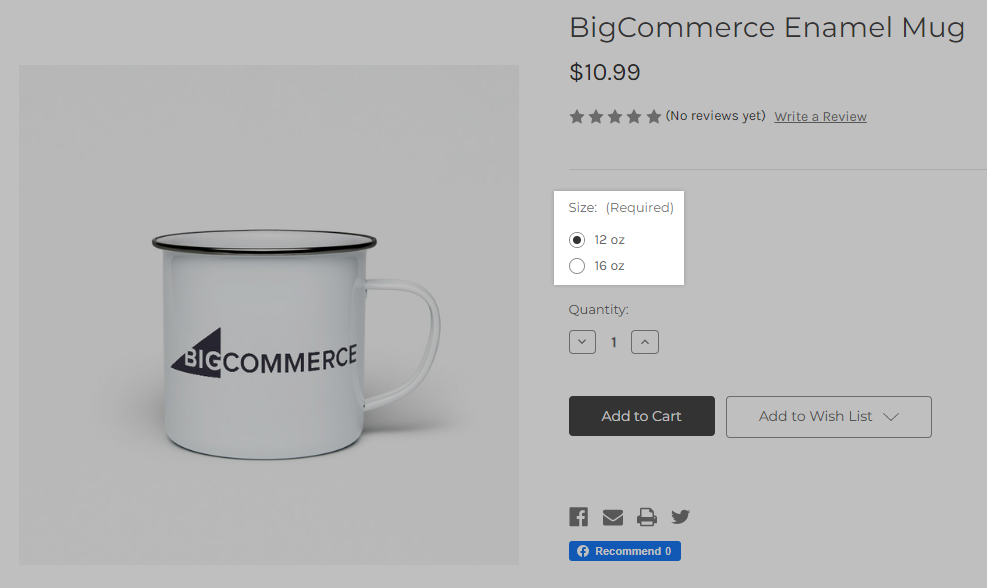
Rectangle List
The rectangle list displays your product’s options side by side. Rectangle lists are a great alternative to radio buttons if the variant option has more than two or three values, such as clothing sizes.
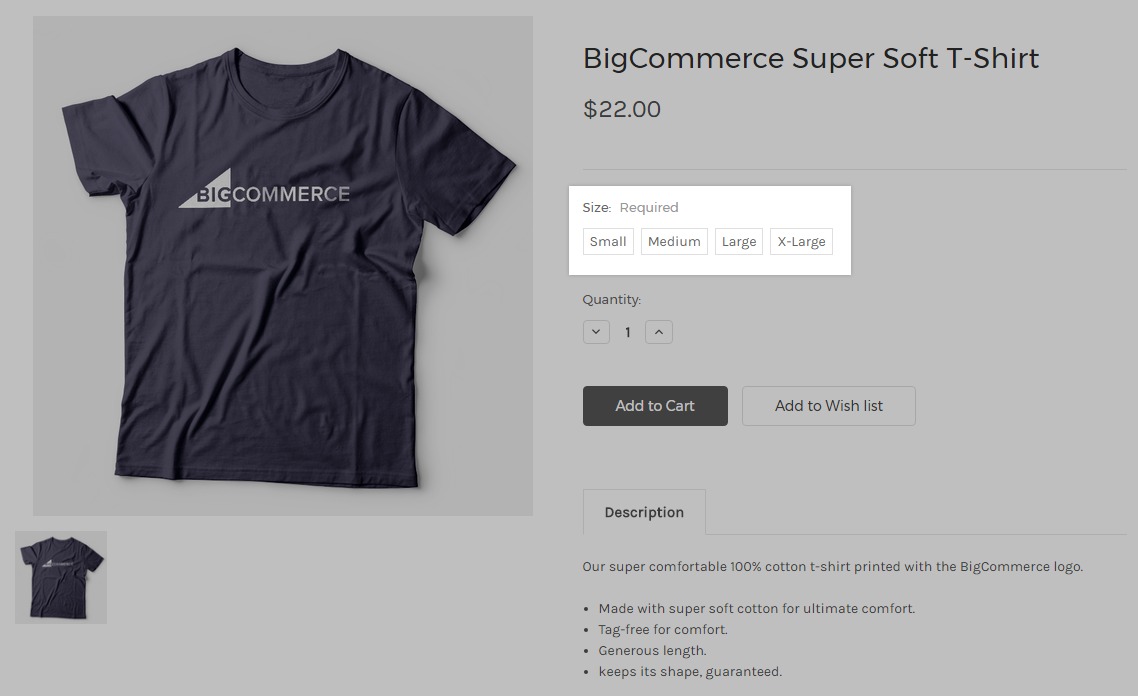
Dropdown
Dropdowns organize your option values into a drop-down list, which is collapsed by default. Dropdowns help to consolidate the space used by product options with a wide variety of values to choose from, such as a ring with multiple gauge sizes or a candy that comes in different flavors.
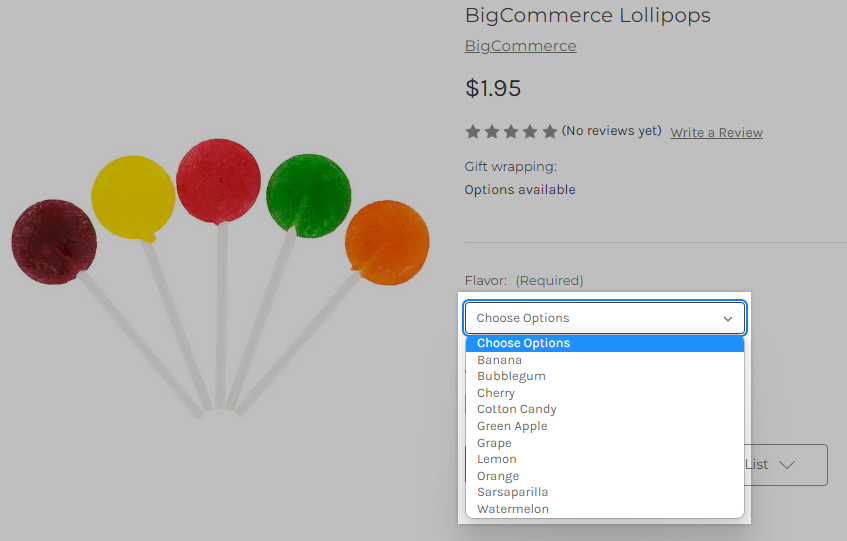
Modifier Options
The Customizations section of the Add Product page is where you can manage your modifiers. Product modifiers consist of two elements: modifier options, which are the selections presented to your shoppers on the storefront, and modifier rules, which correspond to individual modifier option values and update the product’s price and weight when the value is selected. To learn more about creating modifier options and rules, see Product Options (v3).
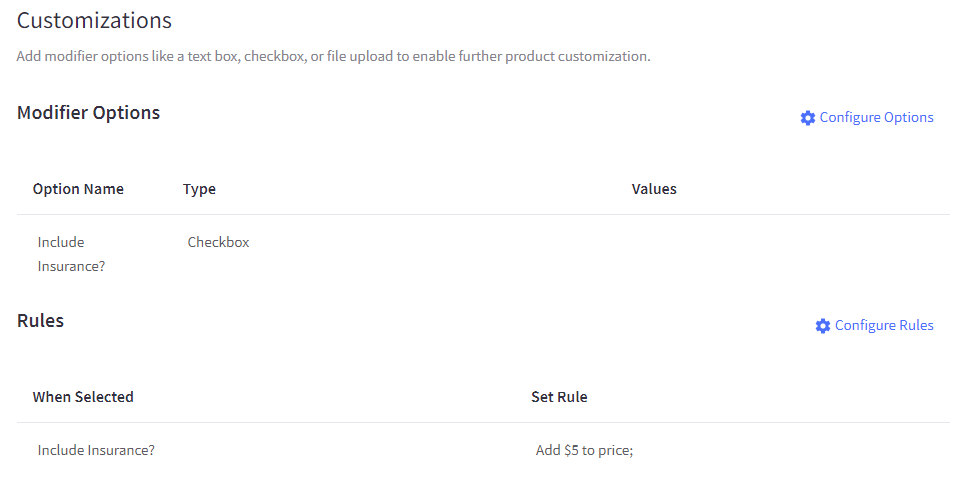
As with variants, you can specify default values for your modifier options. You can also make them required or optional for purchase. This allows you to offer selections that your shoppers can opt out of without needing to manually create a “none” option.
Modifiers can be presented in any of the four multiple choice option types, but there are several option types that are modifier-exclusive:
Checkbox
This presents a simple checkbox under the name of the option. Checkboxes are commonly used to upsell a related accessory or include services like insurance or donations.

Text/Number Fields
Text/number fields provide three different options for shoppers to enter custom values. With each option, you can specify a minimum and maximum number of characters that can be entered.
- Text Field — allows shoppers to enter a single line of text, great for offering personalized engraving
- Multi-Line Text Field — provides a larger area for shoppers to enter longer content, such as a gift message or custom specifications
- Numbers Only Text Field — restricts entries to numeric characters, useful for products that can be made in custom dimensions
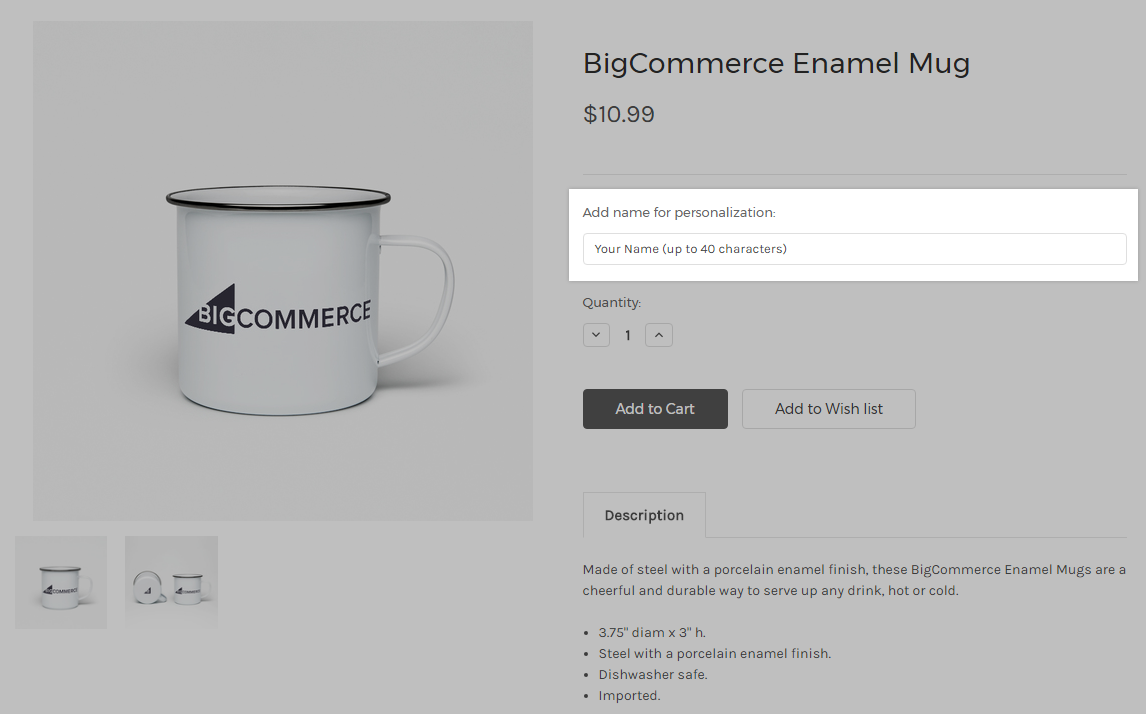
Date Field
The date field option presents drop-down menus for month, day, and year. These are commonly used for products that are time-sensitive or services that require an appointment.
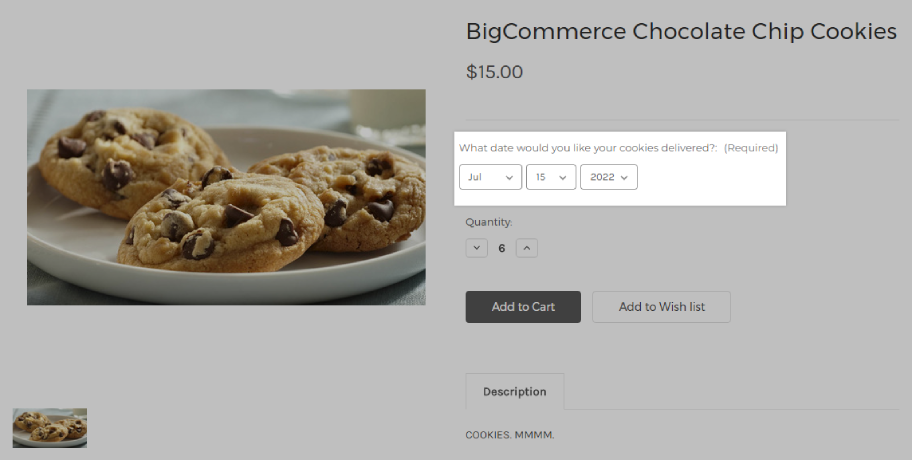
File Upload
With file uploads, shoppers can submit a file when purchasing your product. You can restrict the type of files that can be included, such as images, audio and video files, and documents. File upload options are useful for custom-printed products like photo albums or branded clothing. Note that a maximum of 20 files can be uploaded to a single product.
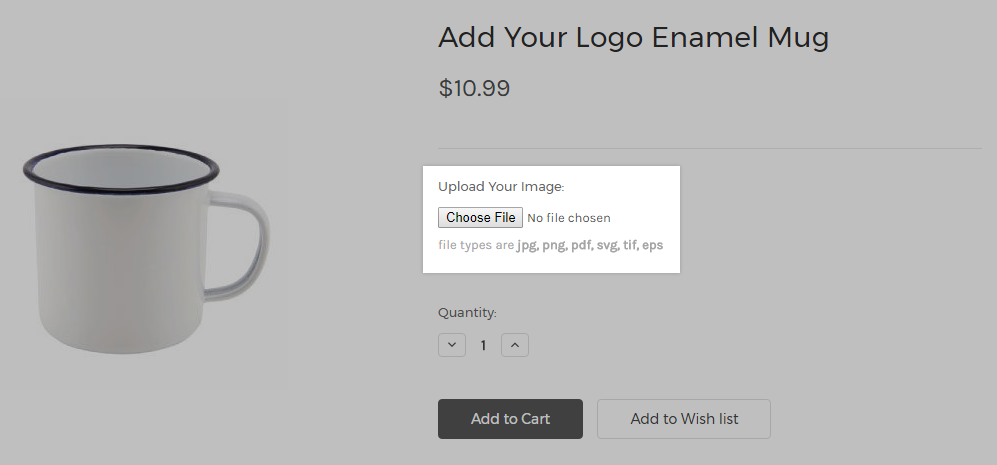
Pick List
With pick lists, you can display a selection of associated products that can be added to the cart with your main product. This is a great way to upsell product accessories or create product “bundles” such as a gift basket with a selection of wine, cheese, and crackers.
